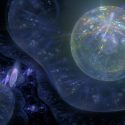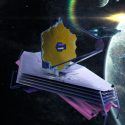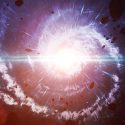Contrary to what some people think, the Earth isn’t the center of the Universe. But what if it was? What if those medieval astronomers were right, and everything does revolve around you? How would this change what we know about the Sun? In what ways would the other planets move around us? And how would this affect your everyday life?
About one millennium ago, it was widely accepted that the Earth was the center of the Universe. If you were an ancient human looking at the night sky, you’d see the Sun, the Moon and the stars seeming to rotate around you.
This was the geocentric model of the Solar System. It put the Earth right at the center of it all. And this model was used for a long time, from about 550 B.C.E. until the 17th century.
Eventually, more advanced scientific observations and knowledge meant this idea could no longer be supported. It was replaced by the heliocentric model, which places the Sun at the center of our Solar System.
But just because it’s simpler doesn’t mean it’s true. What if all the crazy complications of a geocentric Universe were actually correct? If the Earth was the center of the Solar System, you’d have to unlearn a lot of what you know about the Universe.
The Earth would now be in the middle of everything. Surrounding us would be several layers of other celestial orbits. Right next to us would be the Moon. Then the Sun. Then Venus, Mercury, Mars and the rest of the planets of the Solar System.
Beyond that, a sphere containing all the stars. And beyond that, the end of the Universe as we know it. If this reordering meant the laws of gravity stayed the same, then the sizes of the Earth and the Sun would have to change dramatically.
Our planet would need to be bigger, and the Sun would have to be smaller. And not by a little. The largest planet in the Solar System now is Jupiter, and its mass is only 0.1% of the Sun’s. And Jupiter is over 300 times more massive than the Earth. So this would require some significant changes in our planetary neighborhood.
A smaller Sun would no longer be capable of powering itself with fusion. So you’d be getting a lot less sunlight. This would have enormous effects on the climate and the habitability of Earth. The average temperatures would plummet. And they would keep decreasing until the Earth turned into one giant snowball.
As for the other planets, they would no longer orbit in their elliptical patterns. Instead, they would revolve around the Earth in some strange orbits. But we’ll get back to this in a moment. The planets would all revolve around us at different speeds. But the Moon’s orbit wouldn’t be uniform. It’s orbit would change every month. Wow, that would be chaotic.
And here’s a strange part for all the stargazing earthlings. Sometimes the planets would look like they were moving backward.
That’s because the planets wouldn’t simply revolve around the Earth. They would also follow their own mini orbit, called the epicycle. And that would result in this funky path around the Earth. At least the Earth would still have its seasons. But not because of the Earth’s axis. Instead, it would be because the Sun would move up and down the celestial equator as it was orbiting us. It would heat the Northern Hemisphere at one point and the Southern Hemisphere at another.
Is this geocentric model giving you a headache? Maybe it’s time you listened to the overwhelming evidence that you are not at the center of the Universe after all. But maybe not all of the old theories are wrong. Maybe there is an alien civilization hiding within our planet and you need to look deeper under the surface of your world to find it.
Sources
- “What Is The Geocentric Model Of The Universe? – Universe Today”. 2016. universetoday.com.
- “The Biggest Problems With The Geocentric Model Of The Universe”. 2021. actforlibraries.org.
- “Difference Between Heliocentric And Geocentric”. 2012. differencebetween.com.
- “Earth’s Orbit Around The Sun”. Matt Williams. 2021. phys.org.
- “Geocentric Theory”. 2021. science.jrank.org.



























